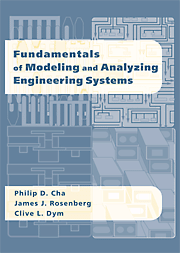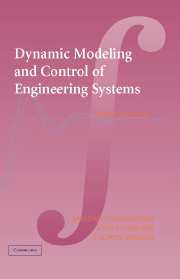Fundamentals of Modeling and Analyzing Engineering Systems
System modeling and analysis is a standard activity in every engineering discipline. This text offers a broad-based introduction to systems engineering that incorporates material from mechanical, electrical, aerospace, and chemical engineering. The overall theme that distinguishes it from other texts is its unified treatment of disparate physical systems, emphasizing similarities in both the modeling and behavior of lumped-element systems. Every chapter includes a wide variety of examples, as well as exercise problems, drawn from real-world mechanical, electrical, hydraulic, chemical, and thermal systems. Aimed at second- and third-year undergraduates, this introductory text offers a unified entry into the multidisciplinary world of engineering. Solutions manual available.
- Unified treatment emphasizes the common features of system modeling and analysis in all engineering disciplines
- Writing is clear and concise, amplified with lots of real-world examples
- Introduces feedback systems at a level accessible to beginning engineering students
Reviews & endorsements
"Good coverage of materials...suitable for electrical engineering, mechanical engineering, and systems engineering courses...good style of presentation...price is right." Professor Manohar Das, Oakland University
"...this book can be successfully used as an introductory textbook for the new engineering student that seeks to gain some understanding of the field of engineering system modeling and characterization." Applied Mechanics Reviews
"The presentation of the material is very clear; it is both mathematically rigorous and well illustrated with schematics." Engineering Structure 2001
Product details
April 2000Hardback
9780521594431
490 pages
254 × 203 × 27 mm
1.21kg
304 b/w illus. 6 tables
Available
Table of Contents
- Preface
- 1. Fundamental concepts in mathematical modeling
- 2. Lumped-element modeling
- 3. Generalizing lumped-element modeling
- 4. First-order system models
- 5. Second-order models of systems
- 6. Laplace transform
- 7. Frequency response of linear, time-invariant systems
- 8. State space formulations of systems problems
- 9. Relating the time domain, frequency domain, and state space
- 10. Feedback systems.







